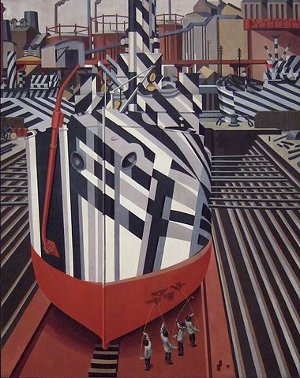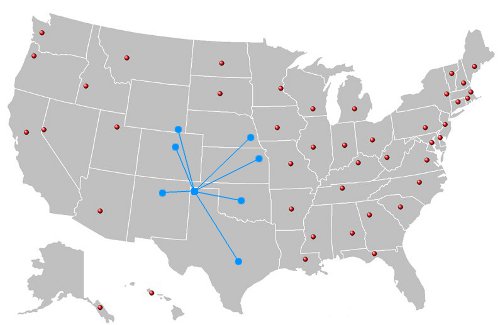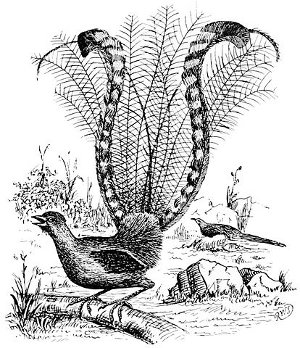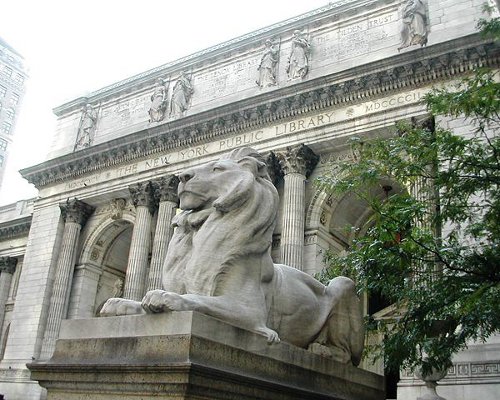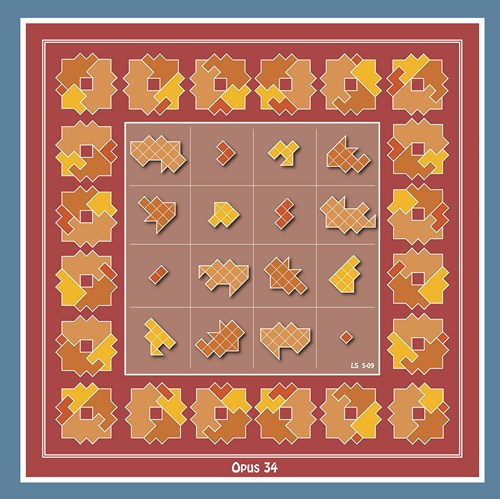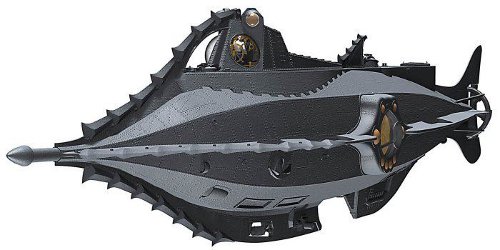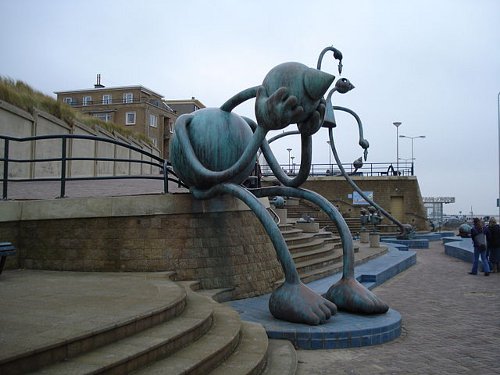
What is this? It’s the American cargo ship West Mahomet in port, circa November 1918. During World War I British and American merchant ships adopted “dazzle camouflage” in hopes that it would help to confuse their type, size, and heading in enemy rangefinders.
It’s hard to say how well it succeeded as camouflage, but it’s a notable episode in art history: The painting style employed ideas from cubism and vorticism, and English artist Edward Wadsworth, who had helped to direct the effort, continued to pursue these themes even after the war — below is his Dazzle-ships in Drydock at Liverpool from 1919.
